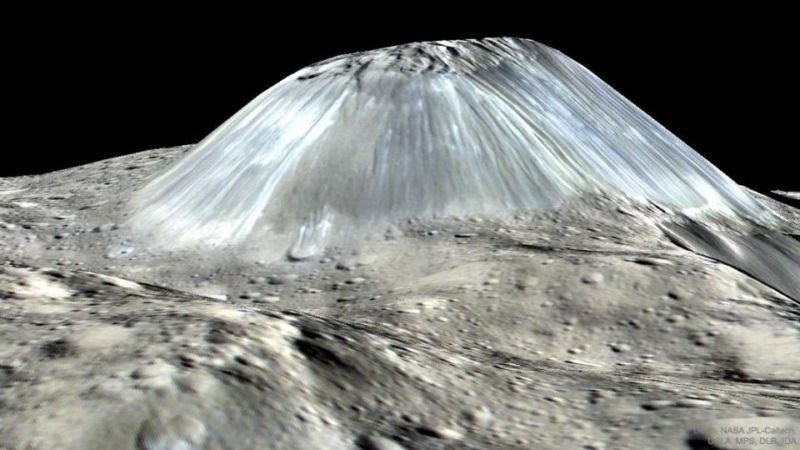Ice volcanoes have likely been erupting for billions of years on Ceres
Ars Technica » Scientific Method 2018-09-18

Enlarge / Ahuna Mons, a likely cryovolcano. (credit: Dawn Mission, NASA, JPL-Caltech, UCLA, MPS/DLR/IDA)
All of the bodies in our Solar System started out hot, with energy built up by their gravitational collapse and subsequent bombardment. Radioactivity then contributed further heating. For a planet like Earth, that has kept the interior hot enough to sustain plate tectonics. Smaller bodies like Mars and the Moon, however, have cooled and gone geologically silent. That set the expectations for the dwarf planets, which were thought to be cold and dead.
Pluto, however, turned out to be anything but. It turns out that water and nitrogen ices need far less energy input to participate in active geology, and radioactive decay and sporadic collisions seem to be enough to sustain it. Which brings us to Ceres, a dwarf planet that is the largest body in the asteroid belt. The Dawn spacecraft identified an unusual peak called Ahuna Mons that some have suggested is a cryovolcano, erupting viscous water ice. But why would Ceres only have enough energy to support a single volcano?
A new paper suggests it doesn't. Instead, there may be more than two dozen cryovolcanoes on Ceres' surface. We just haven't spotted them because geology on the dwarf planet didn't stop when the cryovolcanoes stopped erupting.